What I Learned Driving a Manual Car Wearing a Kimono – Apparently, Traditional Clothing Can Be a Traffic Violation
公開日:2019.11.20
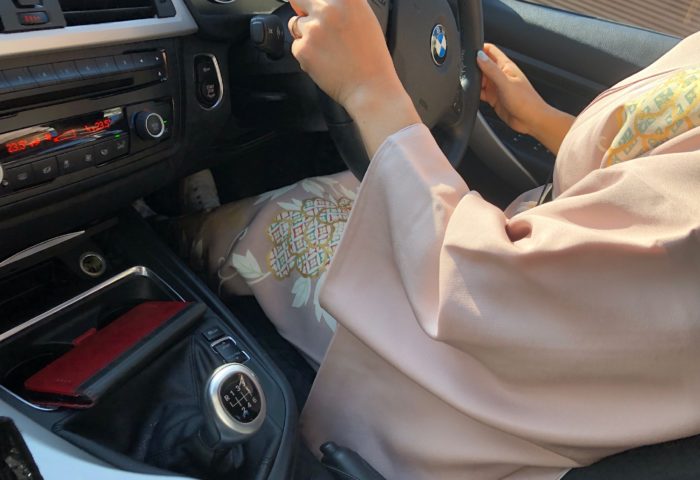
Kimono and Manual Cars
The other day, we celebrated my daughters’ Shichi-Go-San, and as their mother, I also wore a kimono. Time flies—my youngest is already three years old. Since she was born, it feels like both a long time and just a blink of an eye…
In the past, many children didn’t survive past age seven, so rituals like Shichi-Go-San were created to pray for children’s healthy growth. I’m truly grateful that our children have grown up healthy and well.
Since the shrine for the Shichi-Go-San prayers is about a 15-minute drive from home, I decided to take this opportunity to try driving a manual car while wearing a kimono. Chances like this don’t come around often.
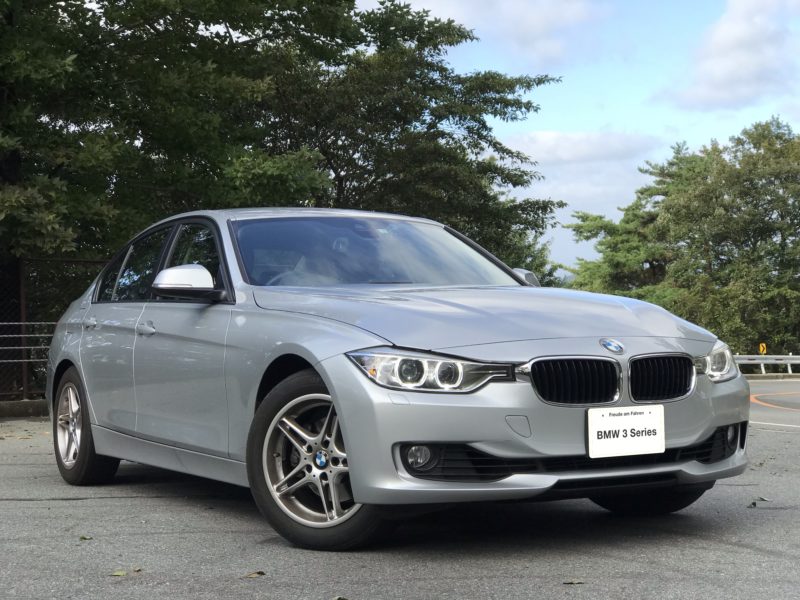
That said, driving in zori sandals felt unsafe, so I changed into sneakers for driving.
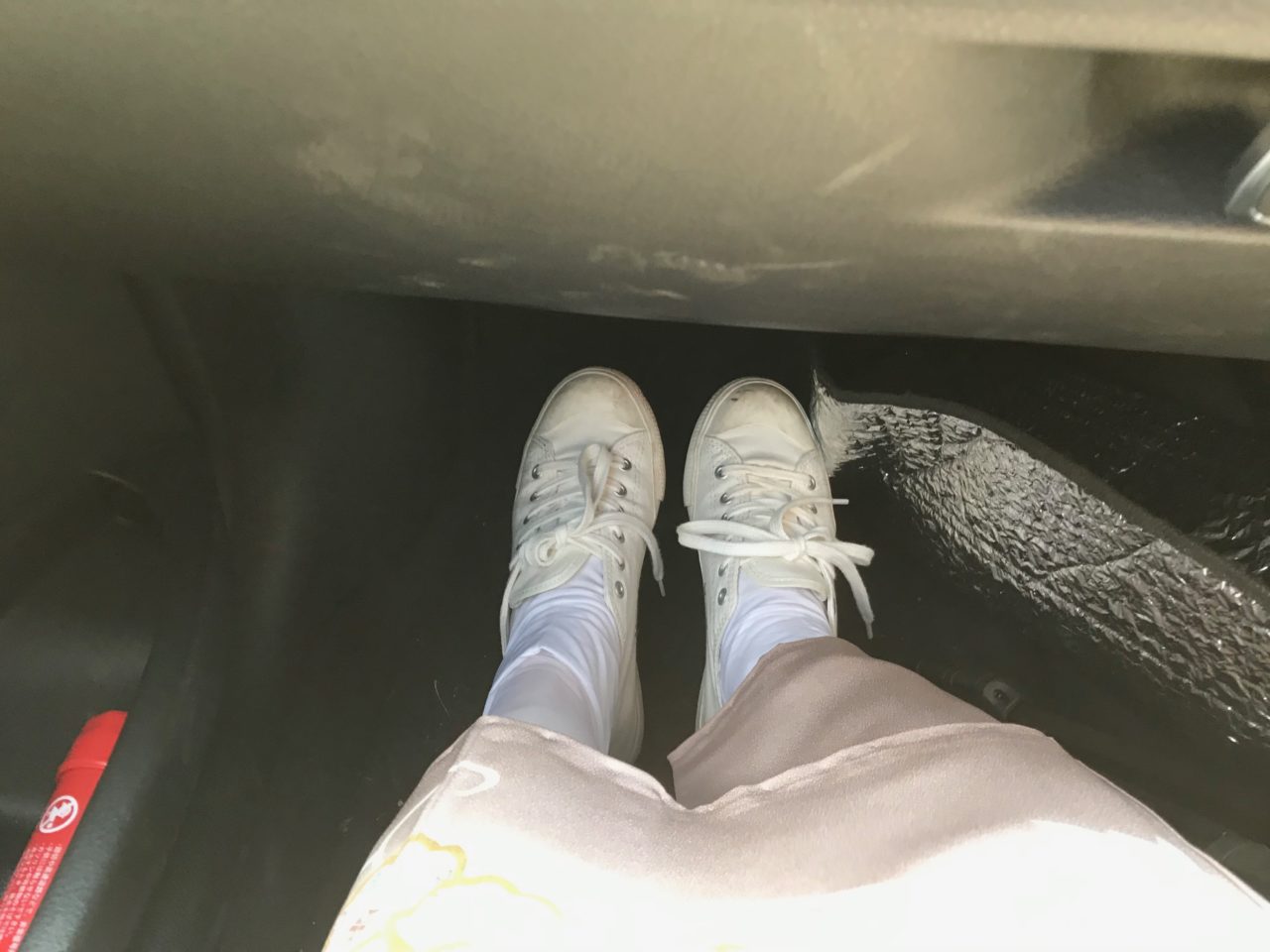
Before getting in, I thought:
Since a kimono restricts how much I can open my legs, driving might be tricky. But well, as long as I change shoes, I should be able to drive without much trouble.
I was wrong (-_-).
First, getting into the driver’s seat while wearing a kimono was surprisingly difficult. You can’t open or lift your legs freely, so you can’t just step in normally. I had to sit down on the seat first, then swing each leg in one by one. Plus, the obi sash on my back (it was an otaiko knot) took up space, so I had to sit closer to the front edge of the seat…
That meant my head bumped the roof, and on top of that, I had to be careful not to dirty the kimono, so just getting in was quite a challenge.
Once seated, I noticed again:
That obi on my back is seriously in the way…
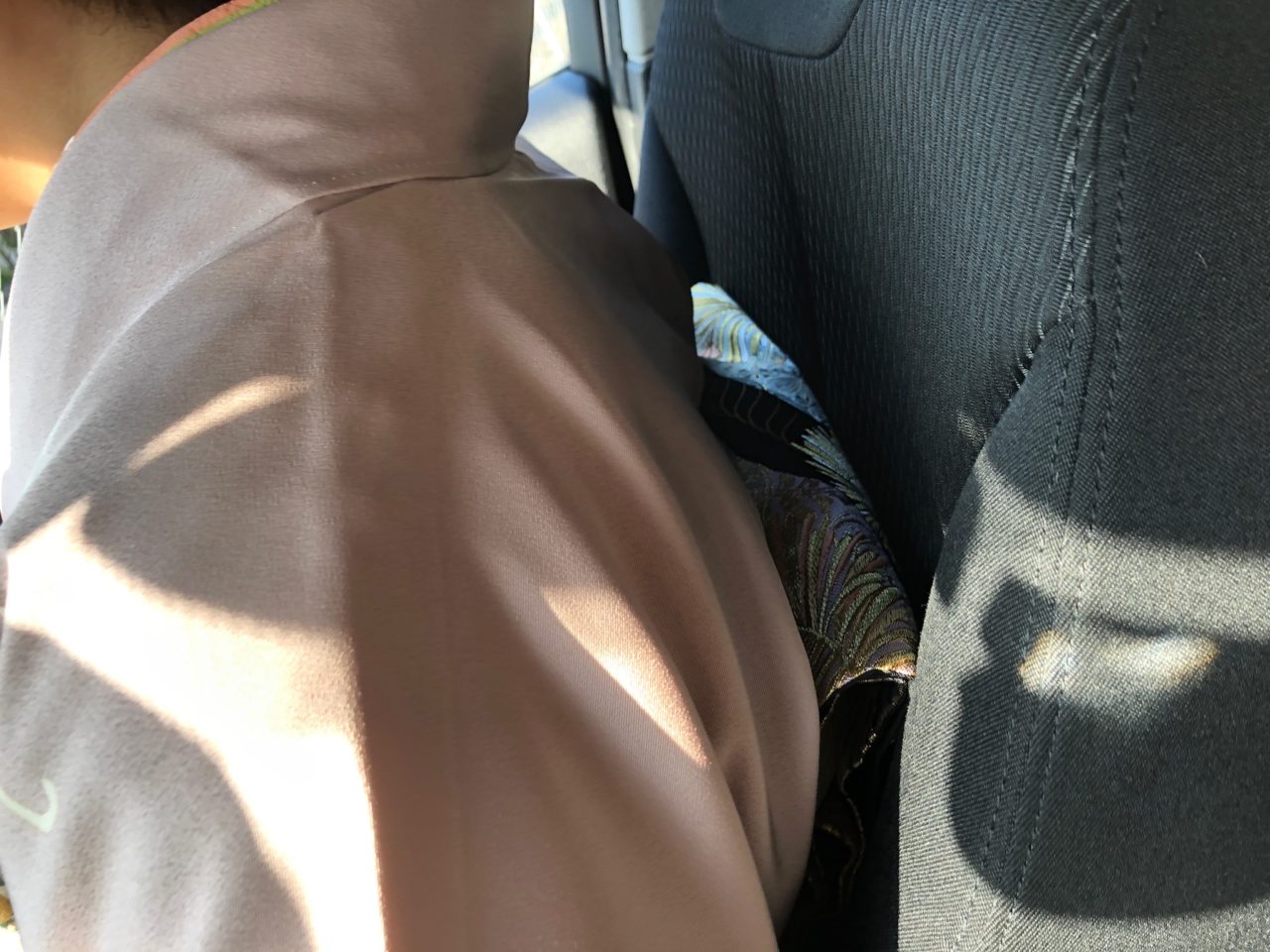
Because of the obi, I couldn’t sit deeply with my back against the seat. I had to lean forward quite a bit and sit around the front half of the seat, but then the steering wheel was too close to drive comfortably.
So I tried moving the seat further back than usual, but then my foot couldn’t reach the clutch (maybe I just have short legs, lol). After a lot of trial and error—“this way, no, that way”—I managed to adjust the seat so I could just barely press the clutch and hold the steering wheel, and set off.
Once driving, I didn’t experience any jerking and could drive as usual, but clutch operation at higher speeds was quite difficult. Because my driving position wasn’t good, every time I pressed the clutch, my leg had to stretch out fully, my heel didn’t touch the floor, and I ended up controlling the clutch mostly with my toes.
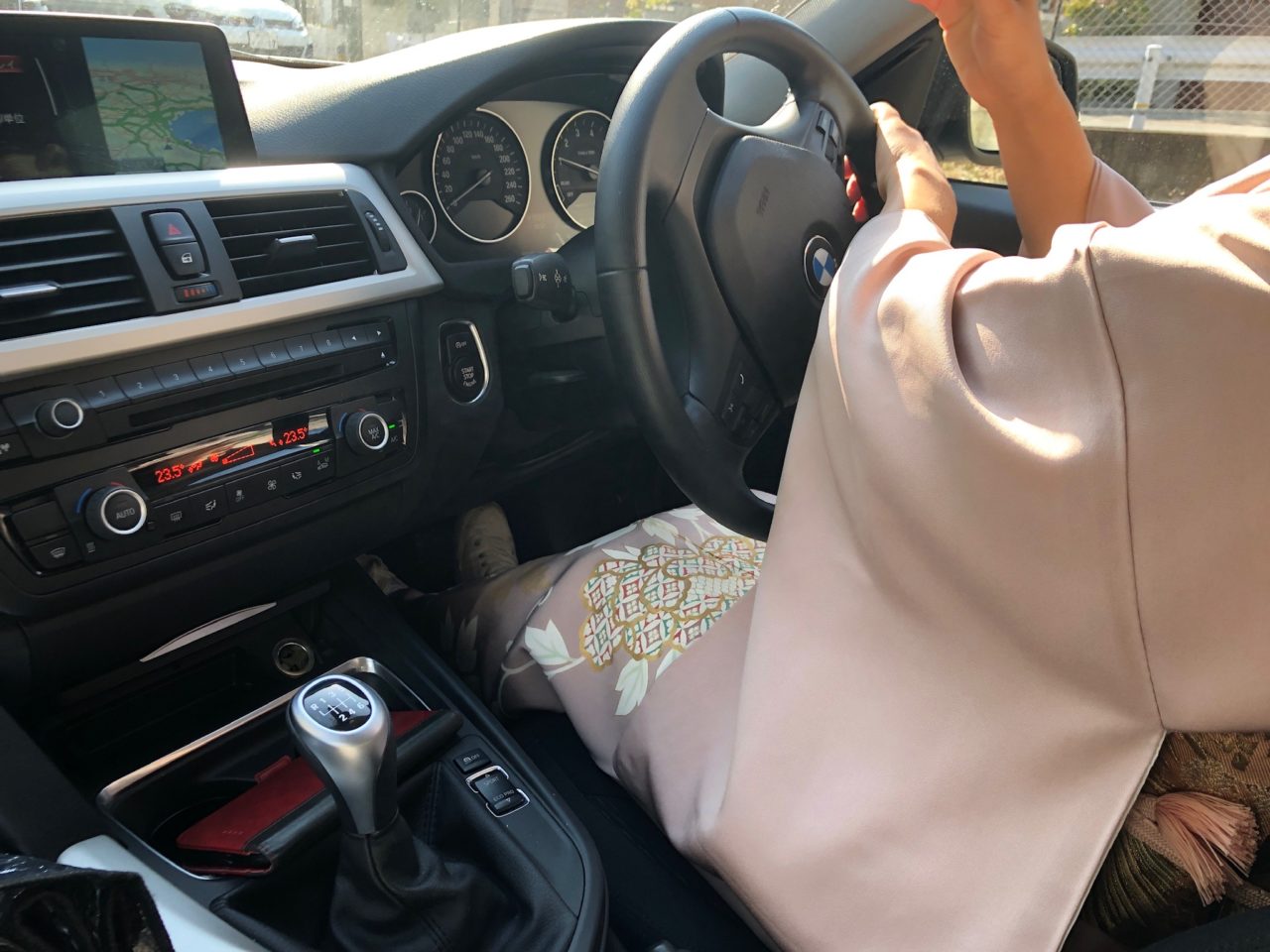
After about three minutes of driving like this, I thought, “No, this is dangerous—I won’t be able to react quickly in an emergency.” So I had my husband take over driving.
We pulled over, and when he took the wheel, I noticed quite a few people on the street staring at my kimono-clad self. They probably never guessed this car was a manual transmission… lol. Then my husband said,
“No good. I’m wearing my dress shoes with pointed toes today, and when I press the clutch, the tip hits and it’s really hard to drive smoothly. Driving shoes really do make a huge difference…”
He said this with a knowing tone (laughs).
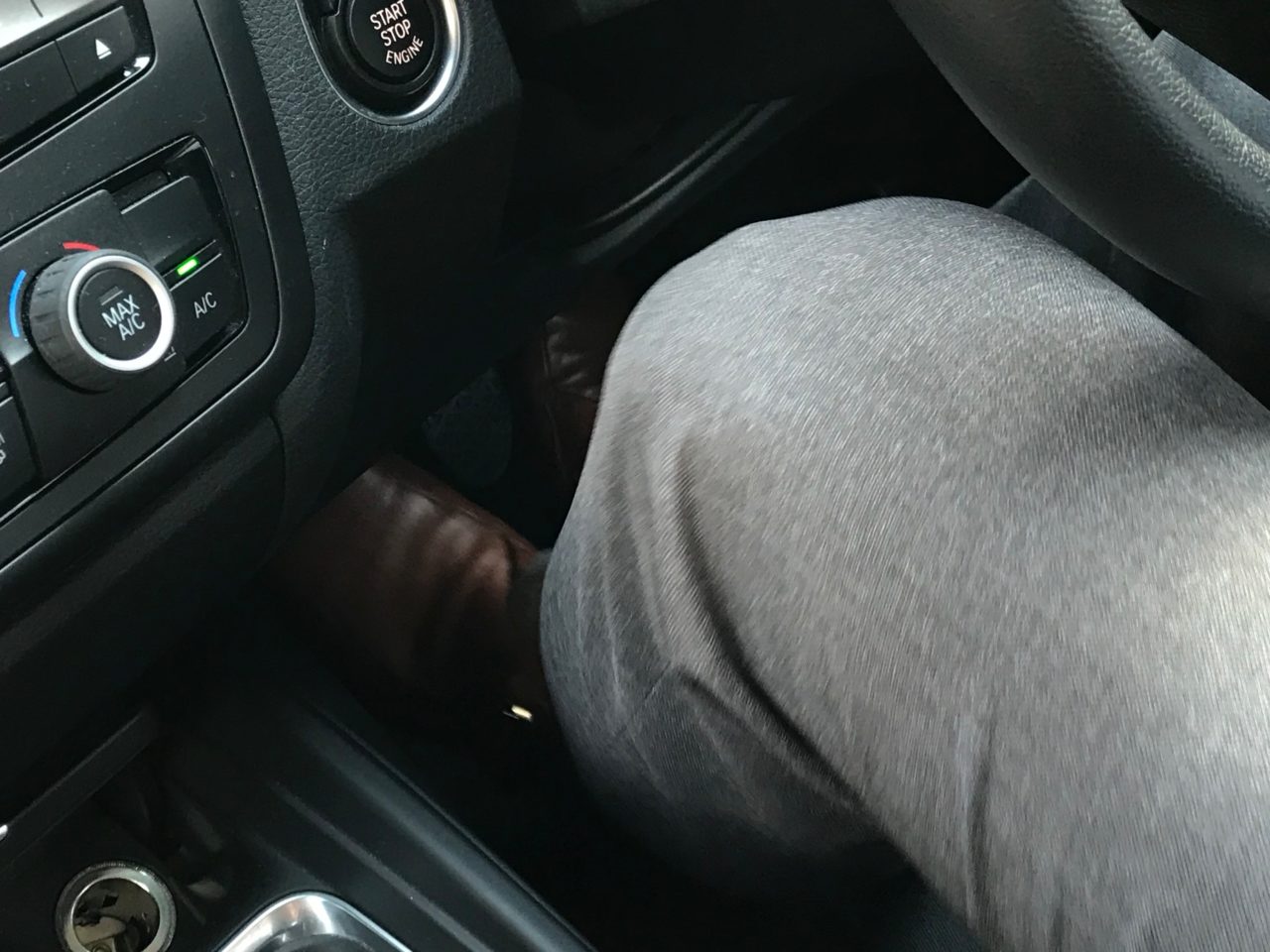
Better Not to Drive in a Kimono
After some research, I found that in some prefectures, driving a car while wearing traditional Japanese clothing can actually get you fined.
・In Fukui Prefecture, a monk driving in his robes was issued a traffic violation ticket.
・The robes were ankle-length, causing both feet to be tightly together, and the sleeves were about 30 cm long, which could catch on the steering wheel or shift lever—these were the reasons for the citation.
・Traffic regulations are set by each prefecture’s own rules.
*Source: Kuruma Erabi.com “Is it illegal to drive wearing furisode or montsuki hakama?”
In Hyogo Prefecture, where we live, there are no specific rules about clothing for drivers, but I still think it’s best to avoid driving a manual car in a kimono. The main reason is that you can’t get into a proper driving position. It’s not just about not being able to open your legs; the obi on your back is a bigger issue.
Because of the obi, you can’t sit firmly back in the seat, which means you can’t assume a proper driving posture. That makes it dangerous because you can’t react quickly in an emergency.
Also, unrelated to the kimono, I was reminded once again of how important driving shoes are. Driving a manual really depends a lot on your footwear. Being able to fully depress the clutch, having a rounded heel, and feeling close to your own foot’s natural movement are all crucial.
You really don’t know until you try… From now on, I think I’ll avoid driving in a kimono.
このブログが気に入ったらフォローしてね!


Comment ( 0 )
Trackbacks are closed.
No comments yet.